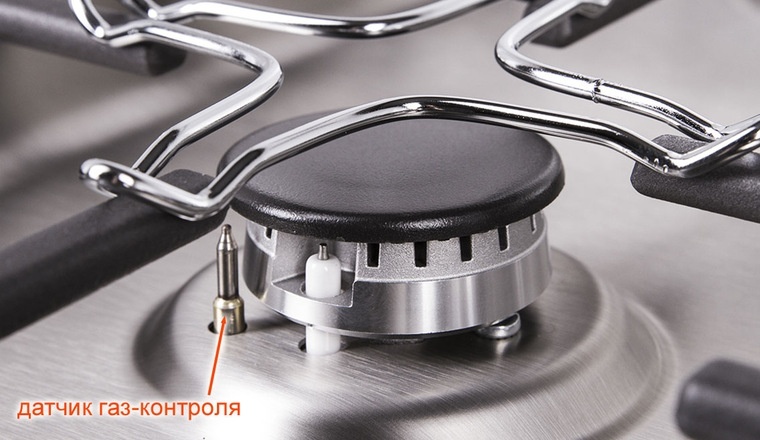
What sensor for gas stove? What to consider when choosing?
Content
- Gas stove sensor - what is its role?
- Where to install the gas stove sensor?
- Which gas oven sensor to choose?
- Sensors integrated into home alarms
- Separate carbon monoxide detectors - cheap devices for monitoring the presence of CO
- Devices equipped with electrochemical and temperature sensors
- Wireless sensor for gas oven
- Gas stove sensor - what to look for when choosing?
- Power supply type and convenience and safety
- Operating Temperature and Humidity
The popularity of gas stoves is due to the fact that this method of heating a house is cheap and reliable. Do you want to guarantee the safety of your household and are wondering which gas heater sensor to install? We suggest what to look for when choosing.
If you are a user of a gas stove, then you probably know that it is necessary to ensure regular inspection of the installation and make sure that no substances hazardous to human health and life are emitted from it. During the heating season, one hears about carbon monoxide poisoning relatively often, so installing high-quality sensors is extremely important. Read what should be followed when buying a device so that the device serves for a long time and without failure.
Gas stove sensor - what is its role?
Chad, or carbon monoxide, is extremely dangerous and difficult to detect. This gas does not have a specific smell, it is also impossible to see it. Useful sensors for a gas oven, reporting the presence of CO in the room. This helps to react in time and thus prevent misfortune. The device can work stand-alone or be integrated with the building's alarm system. Carbon monoxide poisoning often occurs at night when households are sleeping and should be clearly audible even in remote parts of the home.
Where to install the gas stove sensor?
The installation location of the sensor cannot be random. Experts recommend placing the device on a wall at a height of about 1,8 m. It is necessary to install detectors in rooms such as a boiler room, a bathroom and a kitchen, provided that they contain a potential source of hazardous gases. The group of such places also includes a room with a fireplace and a garage.
Which gas oven sensor to choose?
There are two main types of sensors for gas stoves on the market: devices integrated with alarms and stand-alone carbon monoxide sensors.
Sensors integrated into home alarms
This is a convenient option and recommended if you have an alarm in your home. The device is highly sensitive. Integrating the device with the system improves security and provides additional features such as SMS notifications of detected CO concentrations when no one is at home. A certain disadvantage of this solution is the fact that the sensor for a gas oven is completely dependent on the alarm system and stops working in the event of a failure.
Separate carbon monoxide detectors - cheap devices for monitoring the presence of CO
A slightly cheaper option is a battery-operated wireless carbon monoxide detector. Its self-installation should not cause difficulties. The sensor is simple, and the principle of its operation is reliable. It monitors the concentration of harmful gases and gives an alarm when it detects that a certain value is exceeded (for example, 30 ppm). Please note if the sensor has a battery indicator function. Thanks to this, you can change it to a new one in time and avoid interruptions in the operation of the device.
Devices equipped with electrochemical and temperature sensors
The most sensitive stand-alone models with two sensors: electrochemical and temperature. They even detect traces of carbon monoxide in the air. Thanks to the combination of both types of sensors, the detectability of even the smallest concentrations of carbon monoxide is at a very good level.
Wireless sensor for gas oven
Easy-to-use detectors are offered by Kidde. Their compact wireless sensor for gas ovens is equipped with an electrochemical sensor that guarantees very high accuracy and sensitivity. The easy-to-read LCD display makes it easy to operate, while the loud beeper effectively warns of danger.
Gas stove sensor - what to look for when choosing?
When you're looking for a good carbon monoxide detector, there are a few things to look out for. What features of the device are important from the user's point of view? It:
power supply,
Operating temperature range,
Humidity range.
When choosing a detector, consider the conditions in the room where you plan to install the device.
Power supply type and convenience and safety
The carbon monoxide detector can be powered by mains or batteries. Networked detectors are usually less cumbersome to use. There is a risk that the device will not work in the event of a power outage. Therefore, battery sensors are considered safer, especially where there are power outages. When choosing such equipment, make sure that it has a low battery alarm function, because when it is completely discharged, the device will stop working.
On the market, you will also find models that can be powered by both mains and battery. This solution is the most versatile and practical.
Operating Temperature and Humidity
Cheaper detectors designed for indoor environments such as residential areas may not work properly in high humidity environments such as bathrooms or kitchens. The situation is similar with temperature. If the location where the detector is to be installed is very cold, the device must have a wider operating temperature range than standard models.
Now you know what to look for when choosing a sensor for your home. Consider your preferred temperature and humidity range. Stay safe in your home by installing CO sensors.
More guides can be found on AvtoTachki Passions in the Home and Garden section.
